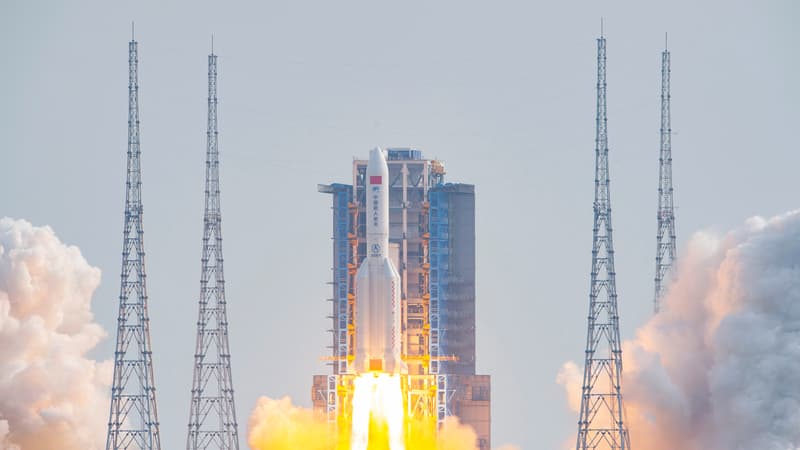The announcement of the fall to Earth of debris from a Chinese rocket caused the temporary closure this Friday morning of several air spaces, including that of southern Corsica but also several territories of Spain. Since Thursday, several international organizations have mobilized to try to determine where this rocket could fall, without being able to give places with certainty, which generates some concern.
Entering a rocket’s atmosphere releases immense heat and causes friction. The segments can then burn and disintegrate. But larger ships, like the Long March-5B, may not be completely destroyed. The risk is then that its debris lands on the surface of the earth and causes damage, even victims, although this risk is low, since the planet is covered with 70% water.
Debris from the ship finally fell into the Pacific Ocean at 11:01 a.m. French time (10:01 a.m. GMT), The US Space Command said in a tweet.. Another debris fell at 11:06 am
An “uncontrolled” fall
The European Space Agency estimated on Thursday in a newsletter “that the debris generated” by this rocket “will likely re-enter the Earth’s atmosphere in an uncontrolled manner on November 4, 2022. Since this is an uncontrolled re-entry, it is difficult at this time to predict the exact trajectory of the debris and where pieces will fall.”
The Aerospace Corporation avait établi jeudi soir una carte des zones où pouvaient retomber les débris, mais les informations étaient minces et les lieux de chute nombreux sur la planète: plusieurs points en Afrique, le Sud de l’Australie, le Mexique et l’Est from United States…
This rocket has “an estimated mass of between 17 and 23 tons, making it one of the largest pieces of debris to have entered the atmosphere in recent years,” the ESA also wrote.
The EUSST, the European Union’s space monitoring and surveillance body, restricted possible drop zones in the morning, drawing a single line on the globe where debris could fall.
This Chinese rocket arises from the trip of a module to the Chinese space station Tiangong. Dubbed Mengtian (“dream of the heavens”), the module was launched on Monday by a Long March 5B rocket from China’s tropical island of Hainan. Then the rocket fell back to Earth.
This is the fourth time a Long March 5B rocket has created this type of situation. The same type of rocket was also fell out of control last Julywithout victims. Numerama explains that these model rockets did not leave Earth’s orbit in a controlled way, something that is done, in particular with the help of engines, for other rockets, which makes it possible to determine where they will land.
“On the three previous occasions, debris fell on a populated area along the west coast of Africa, in the Indian Ocean near the Maldives and in northern Borneo (Malaysia), resulting in injuries or deaths,” recalls the Spanish newspaper El Periódico.
“Most of the Earth’s surface is covered by oceans or uninhabited areas, so the statistical probability of an impact on the ground in populated areas is low,” writes the EUSST, the EUSST space monitoring and surveillance organization. the European Union.
Source: BFM TV


